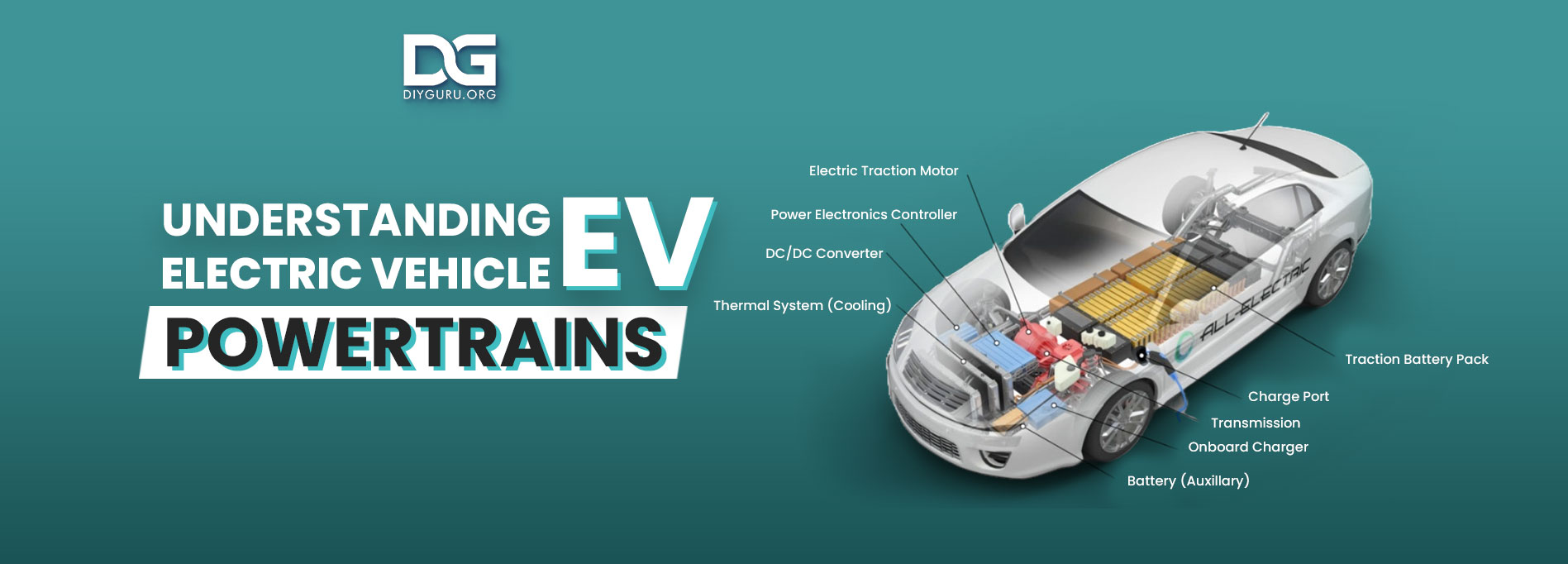Understanding Electric Vehicle (EV) Powertrains: A Comparative Analysis with Internal Combustion Engine (ICE) Powertrains

In recent years, electric vehicles (EVs) have gained immense popularity as a sustainable and eco-friendly alternative to traditional internal combustion engine (ICE) vehicles. One of the critical components that make electric vehicles unique is their powertrain. In this blog, we’ll delve into what an EV powertrain is, and we’ll compare it to the traditional ICE powertrain to understand the differences and advantages of each.
Understanding the EV Powertrain
An electric vehicle’s powertrain is the system responsible for generating power and transferring it to the wheels to propel the vehicle. Unlike ICE vehicles, which rely on a complex network of parts, including the engine, transmission, and exhaust system, EVs employ a much simpler and more efficient powertrain.
Electric Motor: At the heart of every EV powertrain is an electric motor. Electric motors are highly efficient at converting electrical energy from the vehicle’s battery into mechanical energy to drive the wheels. They have fewer moving parts compared to ICE engines, which means less maintenance and a longer lifespan.
Battery: The battery pack stores the electrical energy that powers the electric motor. Modern EVs use lithium-ion batteries, which offer a high energy density and can store a substantial amount of electricity. The size and capacity of the battery pack determine the vehicle’s range.
Inverter: To control the flow of electricity from the battery to the motor, an inverter is used. It converts the direct current (DC) from the battery into alternating current (AC), which the motor uses to operate.
Transmission: Some EVs use a single-speed transmission because electric motors generate maximum torque instantly, eliminating the need for multi-speed transmissions. This simplicity contributes to a smoother driving experience.
Regenerative Braking: Another unique feature of the EV powertrain is regenerative braking. When the driver applies the brakes, the electric motor works as a generator, converting some of the kinetic energy back into electrical energy, which is then stored in the battery, improving energy efficiency.
EV Powertrain Advantages:
Zero Emissions: EVs produce zero tailpipe emissions, reducing air pollution and contributing to a cleaner environment.
Quiet Operation: Electric motors are nearly silent, providing a quieter and more peaceful driving experience compared to noisy ICE engines.
Lower Operating Costs: EVs typically have lower operating costs as they require less maintenance and electricity is cheaper than gasoline or diesel.
Instant Torque: Electric motors provide instant torque, resulting in quick acceleration and responsive performance.
Energy Efficiency: EVs are more energy-efficient than ICE vehicles because electric motors can convert a higher percentage of input energy into forward motion.
Comparing EV and ICE Powertrains:
Emissions: ICE vehicles emit greenhouse gases and pollutants, while EVs produce zero emissions.
Maintenance: EVs have fewer moving parts, leading to lower maintenance costs compared to ICE vehicles.
Range: ICE vehicles generally have a longer range on a single tank of fuel, but EVs are rapidly improving in this aspect.
Charging vs. Refueling: Charging an EV takes longer than refueling an ICE vehicle, but it can be done conveniently at home or using public charging infrastructure.

Performance: EVs often have better acceleration due to their instant torque delivery.
In conclusion, the EV powertrain represents a paradigm shift in the automotive industry, offering a cleaner, quieter, and more efficient alternative to ICE powertrains. While ICE vehicles still dominate the market, the growing availability of EVs and improving charging infrastructure are gradually making electric vehicles a more attractive and sustainable choice for consumers. As technology continues to advance, we can expect even more exciting developments in the world of EV powertrains.
If you’re interested in learning more about electric vehicles, consider enrolling in electric vehicle courses or electric vehicle training programs to deepen your knowledge and expertise in this exciting field.





